Oppo Watch Review
The Oppo Watch is the best Wear OS smartwatch
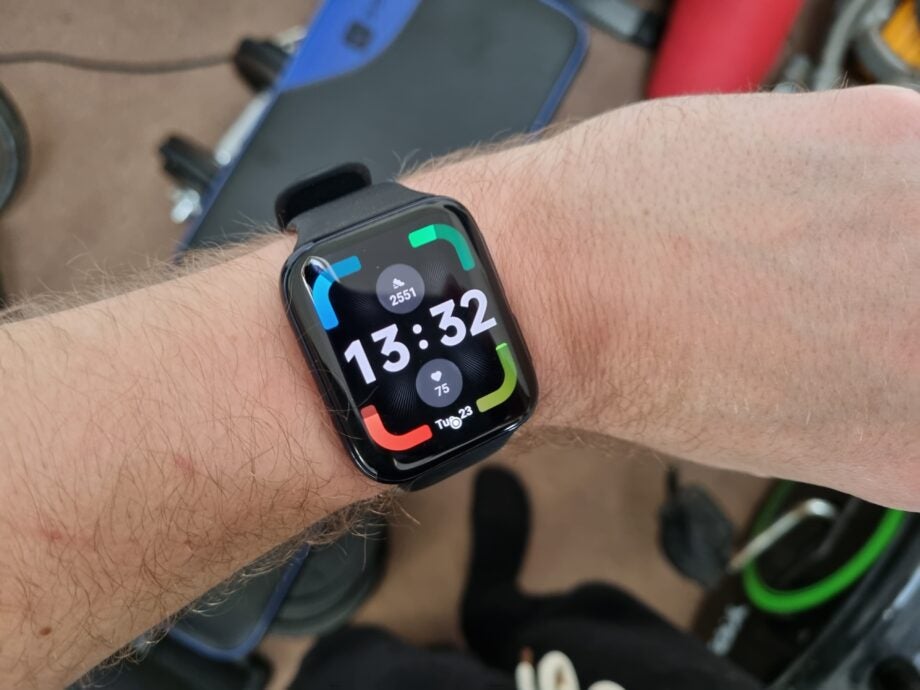

Verdict
The Oppo Watch is a great looking wearable and one of the best representations of the Wear OS platform. But ongoing issues with Wear OS’ feature set and a few bugs stop it from being the full-fat Android-friendly Apple Watch we’ve been waiting for.
Pros
- Bright, clear screen
- Solid performance
- Great looking design
Cons
- Wear OS needs more apps
- Average at best battery life
Key Specifications:
- Review Price: £229 (41mm), £369 (46mm)
- Wear OS
- LTE option
- Two sizes available
- GPS and HRM
The Oppo Watch is the latest in a growing sea of wearables aiming to challenge the ruling Apple Watch SE’s place as king of the mid-range smart-timepieces.
However, rather than try and challenge the Apple Watch SE using design flourishes, like a circular screen or nifty package of sports features, the Oppo Watch takes an alternative tact. Instead of innovating it aims to entice buyers by sticking as close as possible to the Apple Watch’s winning formula as possible.
Rather than remake the wheel Oppo’s decided to do what many Android fans want, make an Apple Watch that works with their phone – for those out of the know, one of the only bad things about Apple Watches is that they only work with other Apple tech and software.
After a solid month with the watch I can confirm the strategy is fairly smart and the Oppo Watch is one of the best smartwatches with Wear OS I’ve tested. But, sadly, fundamental issues with Wear OS’ app and service offering mean it’s still not a perfect product, here’s why.
Design and screen – The Oppo Watch looks very familiar
- The Oppo Watch looks a lot like the Apple Watch
- It’s very well built and offers a solid 5ATM water resistance
- It also has a solid set of features, including NFC
Taking the Oppo Watch out of its box and its Apple Watch inspiration is immediately clear.
The 46mm LTE (also available in non-LTE and 41mm options) I reviewed looks all but identical to an Apple Watch featuring a square aluminium alloy chassis with slightly curved slides and a heart rate sensor on its bottom. Even the rubber used on the included strap feels like the Apple Watch band.
The only difference is that instead of a digital Crown, the Oppo Watch features two side facing home and multi-function physical buttons to complement its touch screen input.
Some people may bemoan the watch’s obvious inspiration, but I actually think the Oppo Watch is one of the best looking Wear OS wearables around. Taking out of the box build quality is excellent and the thin dimensions and 1.91-inch screen size make it one of the most comfortable to wear and discrete looking watches around. I particularly liked my review unit’s black colouring which gave it an air of class missing on many of the competing Wear OS units I test from the likes of Fossil.
Oppo’s also done a decent job cramming the tiny square chassis full of all the extras you’d expect from a top end wearable at this price. There’s NFC support, which works great with Google Pay, a 5ATM water resistance rating for swimmers and a pleasingly punchy AMOLED panel. The latter is particularly great, offering wonderfully immersive blacks and solid max brightness levels that ensure the screen remained legibly even when I was using it in direct sunlight during testing.
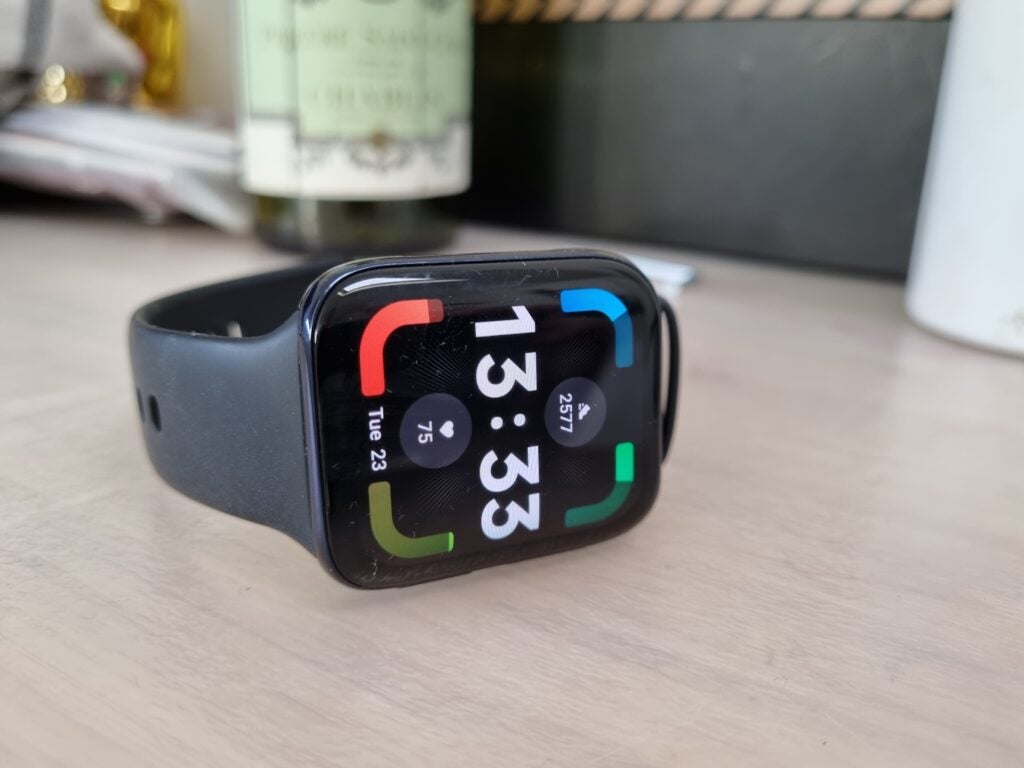
I also found that the 1.91-inch screen size was just about big enough for me to comfortably navigate the phone’s Wear OS interface without too much hassle. Touch screen’s this size are never great for actually typing, but the screen proved big enough for text from incoming notifications and navigation commands while cycling to remain legible.
It also continued to understand commands and react reasonably well when I used it outside in the rain. During a run where I accidentally got caught in a downpour the screen continued to recognise my touch commands to skip tracks without too much hassle.
All-in-all you’ll struggle to find a better looking Wear OS smartwatch.
Features and performance – Wear OS at its best still has issues on the Oppo Watch
-
The custom version of Wear OS is the best implementation I’ve tested
-
But Google’s wearable software still lags behind Apple’s, especially when it comes to apps
Under the hood it also has some pretty impressive hardware. The Oppo Watch is powered by a Qualcomm Snapdragon Wear 3100 CPU and 1GB of RAM which during testing proved more than powerful enough to run every app I threw at it.
After a month with the Watch I’m yet to experience any serious slow down or lag. Applications and services universally open instantly and scrolling, outside of a few crashes, is a pleasingly smooth experience.
The issue is, that despite being the best implementation of Wear OS I’ve tested in quite some time, the truth is Google’s wearable platform is still leagues behind Apple’s when it comes to applications and services.
The Oppo Watch runs using a heavily customised version of Wear OS that in my mind makes the best of a bad situation. Specifically, it makes a couple of key, useful, tweaks to the operating system’s user interface. The first relates to notifications, which are shaded at the top of the main UI. The second is that installed applications are displayed in a 3 x 3 grid UI rather than a rolling list. The latter is a particularly nice touch that makes the Oppo Watch’s interface feel more like the Galaxy Watch 3’s Tizen operating system than Wear OS.
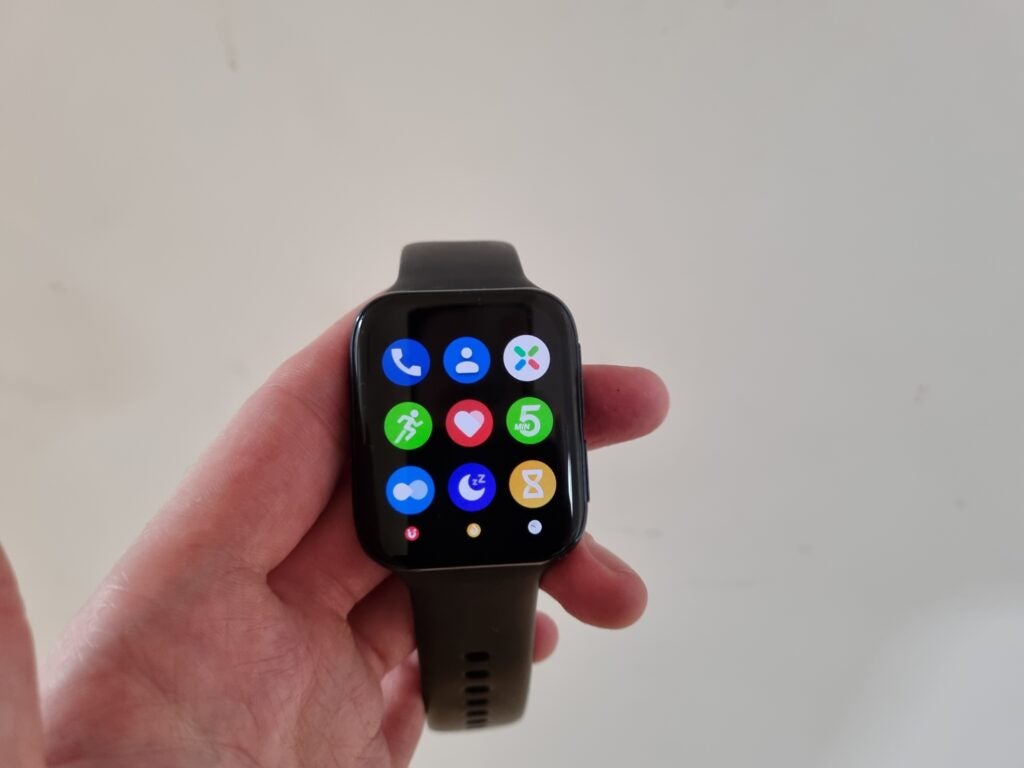
You access the menu using the top right hand physical key. Otherwise you can scroll through various widgets from the main watch face using touch commands. The widgets work the way they do on other Wear OS wearables, offering shortcut information on things like the local weather, your daily activity, sleep and heart rate. As ever what specific widgets appear can be customised using the Wear app or locally on the watch.
However, UI optimisations aside, Wear OS is still an issue. For starters, it’s application support is outright shocking compared to Apple’s at the moment. Sure you have the essentials, like maps, weather, voice recorder, Google Translate, Google Fit and Spotify. I’m also a big fan of Google Assistant, which thanks to the Watch’s reliable mics is genuinely useful. On more than one occasion I’ve settled “debates” with my other half by smugly muttering “ok Google” and asking the Oppo Watch. But there’s not a lot extra to make it feel like a must-have productivity aid.
Music is a good example. If you go into the music section you’ll only find three entries: Spotify, Deezer and a local music player from a company I’ve never heard of. Notice a problem? There’s not even an app for Google’s own YouTube Music service. Google doesn’t even care enough about Wear OS to bother porting its primary Spotify/Apple Music rival onto it.
This is doubly damming as it means it’s pretty much impossible to get local music onto your watch. I understand the LTE model means it is still easy to stream music without a paired phone, and Wear OS does make it super easy to pair bluetooth headphones to the watch. But, the ability to store and save local music files locally on Wear OS using the now retired Play Music app was one of my favourite things about the platform and it being removed without an alternative feels outright odd.
Fitness tracking – The Oppo Watch is reliable
-
The Oppo Watch can track over 90 different activities out of the box
- It includes an inbuilt GPS for accurate distance/location tracking
- The HRM works well enough, but it doesn’t offer enough post-work data for serious athletes
The Oppo Watch is unashamedly a smartwatch first and fitness tracker second. So if you’re after a serious athlete you will be better off paying for the Garmin Forerunner 745 or Polar Vantage V2, which offer more detailed tracking/performance metrics and developed activity modes.
But, as smartwatches go it is a surprisingly capable fitness tracker that will be more than good enough for casual or newbie runners and gym goers. Out of the box most of the fitness tracking services are tied to Google Fit. Though Wear OS does support popular third party services, like Strava, as well.
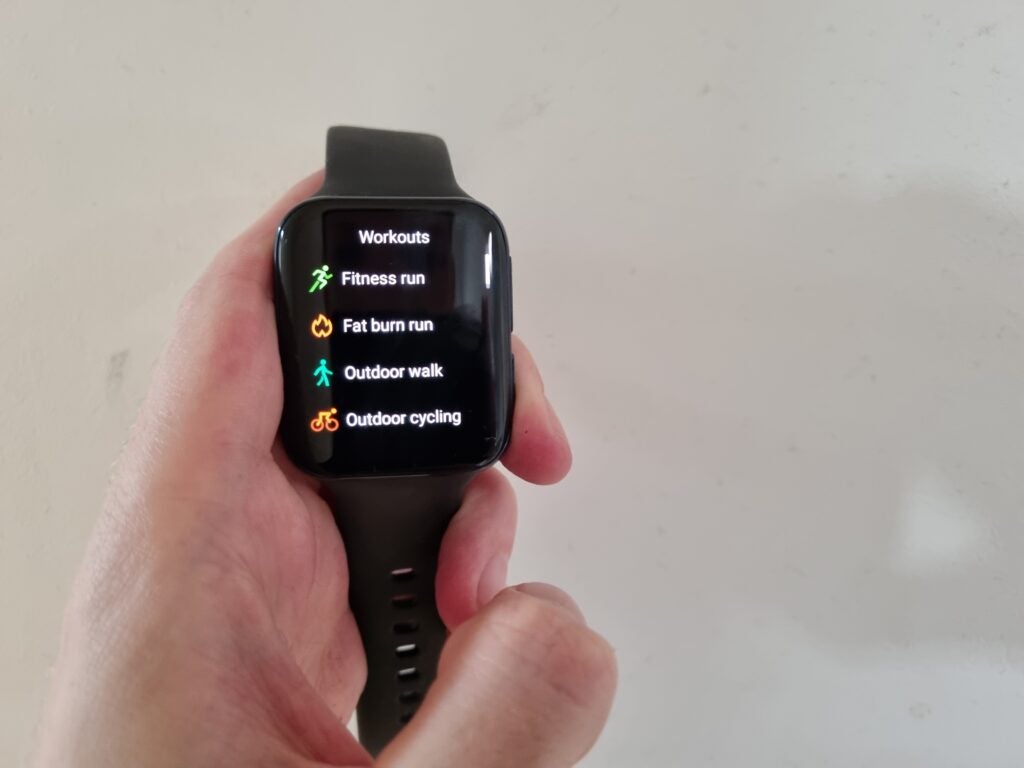
This means from the moment you power it up you’ll be able to track in excess of 90 different workouts and activities. These range from basic things like in-door cycling and outdoor running to more esoteric activities, like Aussie Rules Football. Sadly, due to lockdown conditions, and the fact I live in South East London I didn’t get a chance to test the latter choice. But for most regular exercises the Oppo Watch performed admirably.
I tested the Oppo Watch by running it through a variety of different activities and comparing the data collected against the Garmin Fenix 6 Solar and a MyZone HRM strap. This included multiple runs on a track I know is roughly 5.3km, HIIT sessions to check the responsiveness and accuracy of its HRM tracking and planned indoor and outdoor cycles. Normally I’d also test its swim tracking, but the current UK lockdown made that impossible at the time of publishing.
The in-built GPS proved suitably accurate during testing offering generally uniform distance readings as the Fenix 6. The minor fluctuations I noticed around the specific distance, like an odd run where it showed distance travelled as 5.1km, rather than the standard 5.3km I detect on the route are also largely down to me cutting corners to avoid other people in the park – social distancing is important kids, even if you’re exercising.
My only minor qualm, is that the chip used could take a lot longer than I’d have liked to find a solid connection. On more than one occasion I found myself waiting in the cold outside the park praying for the GPS to connect for a good 2-3 minutes.
Heart rate tracking was also reasonably good. In general, run data was accurate and stayed uniform enough for me to reliably monitor my heart rate zones and monitor performance. The only time the watch struggled to keep up was during particularly animated HIIT sessions where the rapid spike and drop that naturally occurs between activity and rest periods proved a little too much for it.
Post workout analytics and performance data are also nicely presented in Wear OS activity widget. The widget gives you an at a glance breakdown of the time you spent in various heart rate zones, making it easy to gauge how effective it was, plus the distance travelled, steps taken and estimated calories burned. Basically, all the important stuff.
My only minor quibble is that the watch doesn’t come with any coaching features out of the box. This is a shame as, thanks to Fitbit, there are a number of great smartwatches at this price with the functionality.
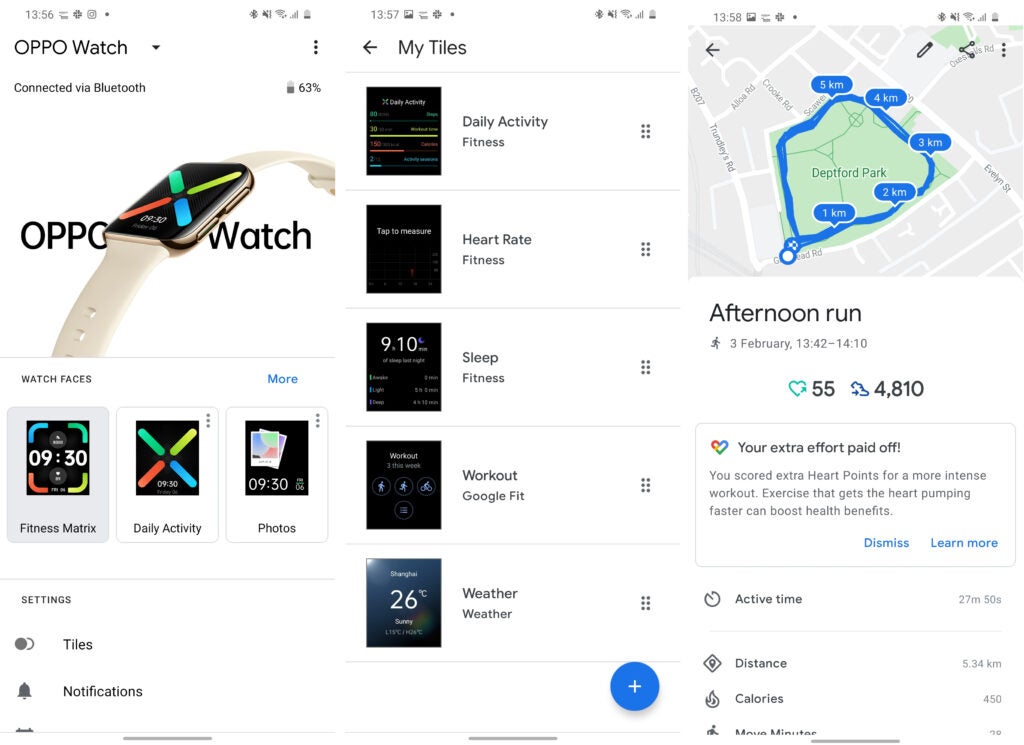
Outside of this the only serious downside is that there’s not enough detailed post workout data to please more serious athletes. For example, finishing my run, there’s no form of VO2 Max estimation and the lack of SpO2 sensor means you won’t be able to track your blood oxygen level, a key metric used to gauge fitness and performance increases. There’s also no post workout recovery time projections, which is a shame as over-pushing is a key mistake people make when they first start a regime to lose weight or improve fitness.
The lack of these features isn’t a huge surprise and a year or two ago I’d have said it’s par for the course for a wearable at this price. But with the Fitbit Sense now out and offering most of the metrics listed above, coming fitted with an SpO2 sensor and guided workouts it may be worth considering that over the Oppo, though you’ll lose some smartwatch functionality, like access to the Google Play Store.
Battery life – The Oppo Watch lasts around a two days
-
The Oppo Watch offers middling battery life compared to other wearables
- With heavy use it can die in less than a day
-
There’s no wireless charging
Battery life is a constant issue on most smartwatches, with most of the ones I’ve tested struggling to make it over two days use off a single charge. This remains the case on the Oppo Watch LTE which, if you turn all its top settings on, struggles to last a single day off a full charge.
Specifically, during testing I found with the always on display setting and constant heart rate tracking activated the watch would be out of juice by 8am with heavy use. This entailed tracking a quick 20 minute indoor bike ride in the morning and 5km run at lunch, plus constant music streaming over LTE and checking incoming notifications.
Thankfully it is possible to extend the battery if you tweak some of the Oppo Watch’s settings. Turning off the always on display is the quickest way to save battery.
Testing the Oppo Watch I found turning the feature off netted me at least half a day’s extra use out of the device. Turning off always on heart rate tracking added another 12 hours.
On average I found tracking a 30 minite run with the GPS on and Spotify over LTE the watch lost between 10-15 percent of its charge.
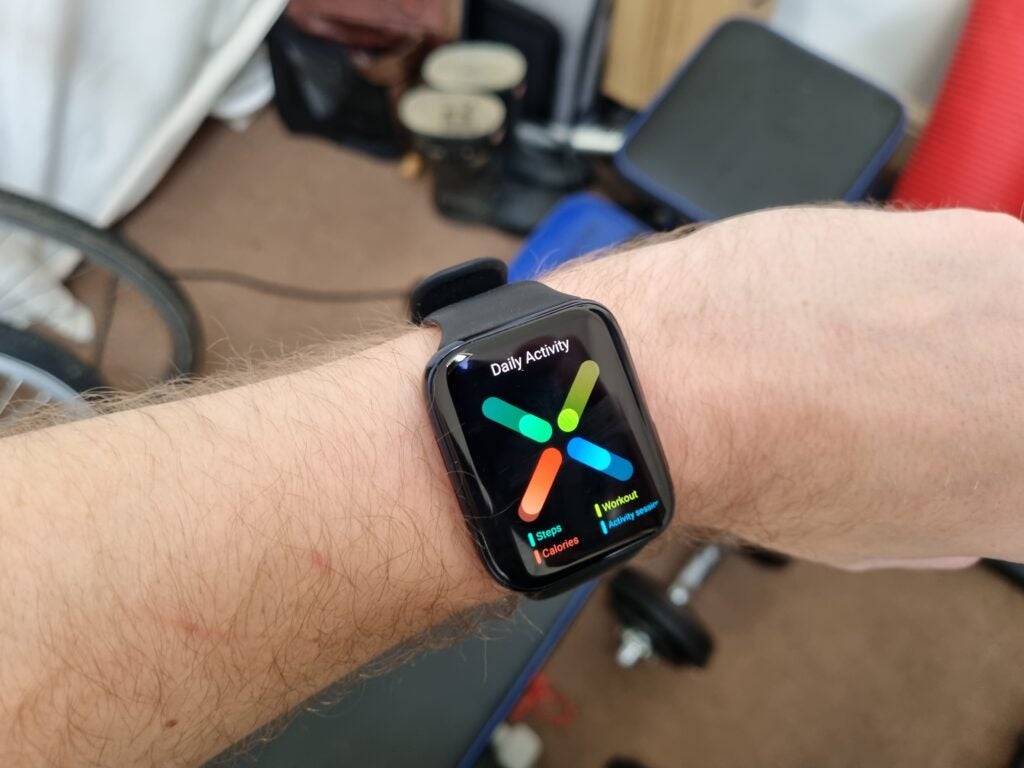
You should buy the Oppo Watch if:
- You want an Apple Watch but don’t have an iPhone: The Oppo Watch is the closest attempt to re-create the magic of Apple’s wearable with Google’s Android friendly Wear OS. It offers a premium, well made design, stellar OLED screen and one of the best implementations of Wear OS I’ve tested.
- You want a smartwatch with solid albeit, basic fitness tracking: The Oppo Watch si a solid option if you want a smartwatch that can deliver solid, easy to understand fitness tracking metrics then the Oppo Watch is a solid option, featuring a reliable GPS, consistent HRM tracking and over 90 trackable activities out of the box.
You shouldn’t buy the Oppo Watch if:
- You care about battery life: The Oppo Watch offers at best middling battery life. So if you’re looking to get a wearable that can reliably last more than a couple of days off a single charge you’ll be better off looking elsewhere. During testing to consistently get more than a day’s use we had to turn off the always on display and constant heart rate tracking features.


